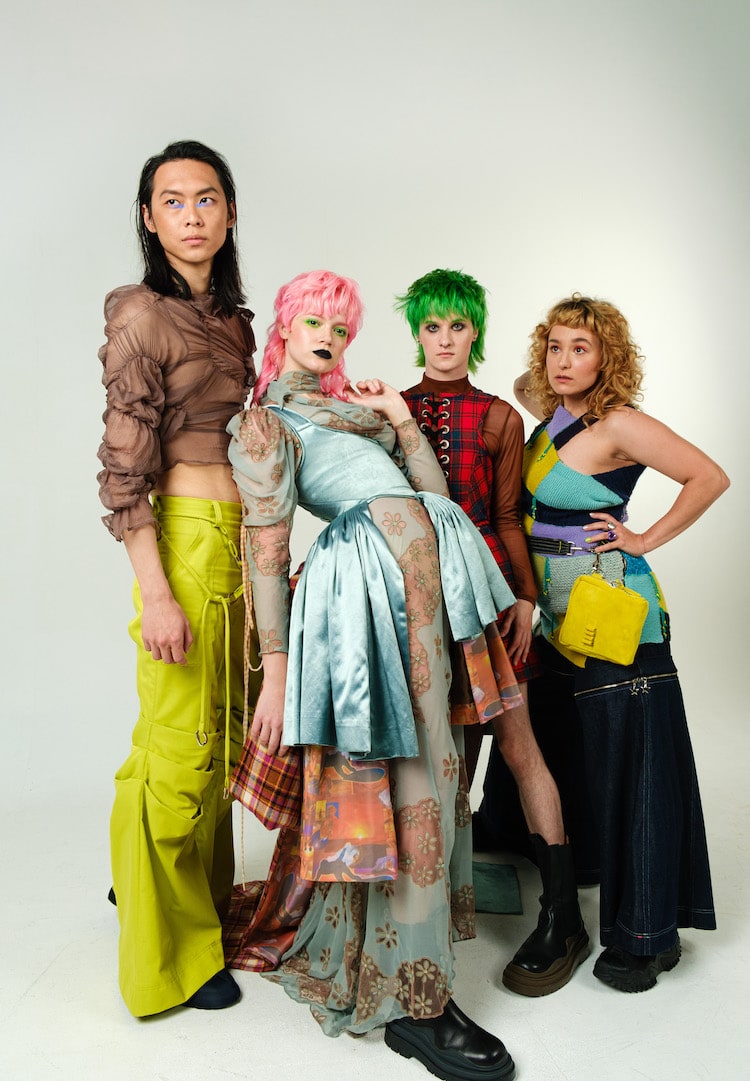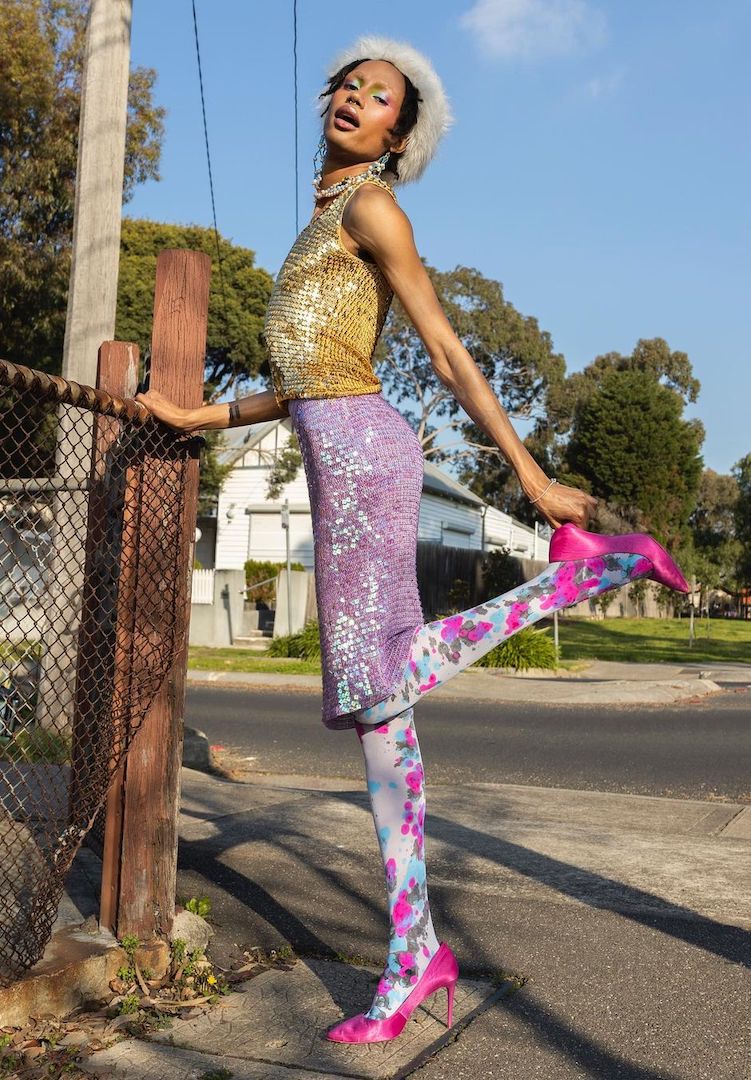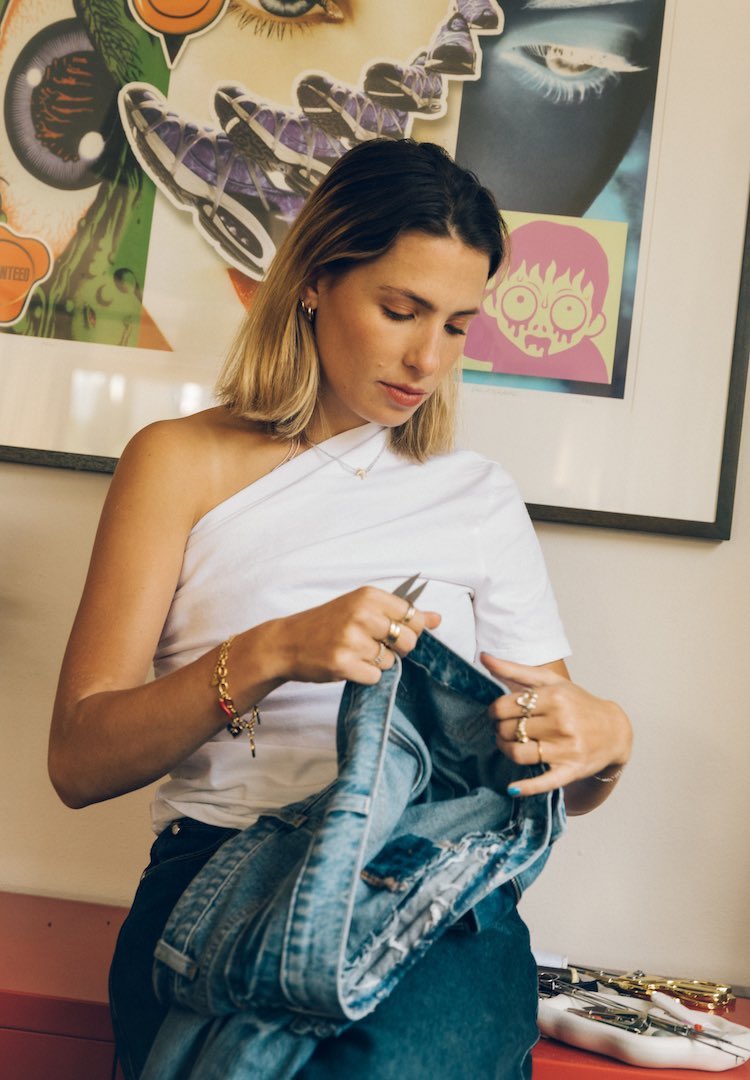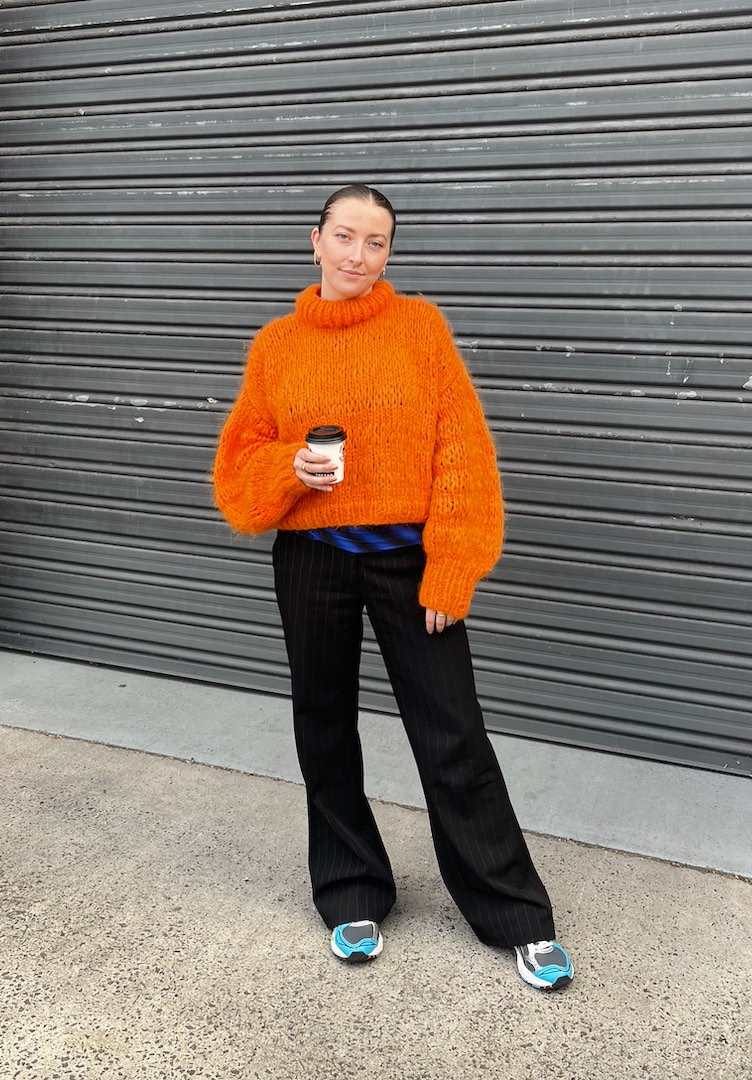What if a QR code could trace how your garment was made?
WORDS By Bianca O’Neill
“Any step towards sustainable and ethical transparency – particularly when it comes for free, as an easy-to-use technology available to any sized fashion business looking to up their transparency reporting – is a good one.”
In 2021, we asked the fashion industry whether it was time to label our clothes for ethical manufacturing like we label our food – a question that ignited passionate discussion about modern slavery, traceability and the difficulty of tracking every single stage of the production process when it’s not your own.
From that discussion, another emerged about the term ‘locally-made’ – often used in reference to clothing manufactured here, from raw materials sourced overseas. Chatting to a range of designers, the difficulty in sourcing Australian-made raw materials when the industry had been decimated over the years was clear; in many circumstances, labels had no choice but to go offshore – not only for the raw materials themselves but also for the many in-between processes that the materials have to undergo.
For more fashion news, shoots, articles and features, head to our Fashion section.
From the fibre being spun into yarn, then dyed and processed into fabric, a raw material may cross the ocean several times before it even arrives at a manufacturer to be made into a garment. So how do local labels – particularly smaller labels, with limited resources – trace every one of these processes to ensure they are ethical and sustainable? And if they’re finding it so difficult to uncover transparency within these complicated supply chains, how can a consumer possibly hope to understand it themselves?
Within our article calling for labelling to enable greater transparency, we also mentioned the possibility of then-emerging blockchain technology to help solve the problem. “Imagine being able to scan two competing garments via a QR code on a tag, and seeing the relative carbon footprint of both at the same time, calculated automatically by an algorithm working in the background,” we pondered, noting that “Unfortunately, this kind of technology seems a way off”. Well, it turns out we were wrong. That technology is already here, and it’s called FibreTrace.
How is this technology helping with transparency?
Back in 2018, FibreTrace was squirrelling away at a patented technology that allowed it to trace cotton fibres from picking to production, and into recycling and reuse. The company’s first offering, FibreTrace Verified, used a patented luminescent pigment that was embedded in raw fibres, enabling them to track the fibres over their lifespan.
Just last month, it released the next step in its traceable technology journey, FibreTrace Mapped, which maps the global textile supply chain from fibre to retail. Speaking to FibreTrace’s Chief Executive Officer, Shannon Mercer, last week, we were surprised to learn that not only is this technology already being adopted by local players including Nobody Denim, Maggie Marilyn, Sir The Label, and Cue Group, but that it is also offering the technology free of charge to producers, manufacturers and to brands and retailers.
“Mapped was launched for free, with the intention of supporting the industry by eliminating the financial barrier that often stands in the way of industry players being unable to map their global supply chain,” explains Shannon.
“Mapped offers users a visual mapping of global supply chains through a cloud-based software program which acts as a tool to centralise product information and social and environmental credentials… Using blockchain technology, data is securely stored in a way that links to the moment in time that the transaction occurred.
“Users of Mapped can share information and documentation within their network to internal stakeholders along the supply chain, or even publish and promote information to a consumer accessible platform, empowering consumers in their purchas[ing] decisions and [improving their] understanding [of] the global textile supply chain.”
In other words, the technology allows each person and process in the supply chain to add information about their processes to anyone viewing it later down the line. Great for reducing the admin that comes with transparency reporting, sure – but how can a brand ensure all the information in there is accurate?
The self-reporting sustainability curveball
As is the case with many of these sustainability and ethical manufacturing discussions, FibreTrace relies on accurate and ethical self-reporting all along the supply chain. It’s here that most transparency reporting hits the inevitable curve ball: to what extent can we trust those who self-report?
“We acknowledge that a digital-only supply chain solution is not a final solution as although blockchain itself is secure, digital traceability is based on self-reported data, and does not guarantee social or environmental compliance. We view Mapped and other digital-only traceability tools as the first step towards a more sustainable, transparent future,” Shannon explains.
“The only true way to guarantee traceability and transparency is by connecting the physical traced fibre with the digital software… We’re hopeful that the future will see brands adopting a solution that combines both physical and digital mapping technology to ensure data is not only being accurately gathered along the supply chain but that [the] data is true and irrefutable.”
But as they say, let’s not throw the baby out with the bathwater. Any step towards sustainable and ethical transparency – particularly when it comes for free, as an easy-to-use technology available to any sized fashion business looking to up their transparency reporting – is a good one.
John Condilis, CEO and Co-Founder of Nobody Denim, is hopeful that FibreTrace can help their brand thrive in a post-greenwashing environment, where consumers are looking for brands to put their sustainable credentials out front.
“We are proud to have been the very first brand globally to work with FibreTrace,” says John. “It is testament to our commitment to investing in innovative technology to shorten the supply chain and ultimately continue to run the most sustainable, transparent business possible… Delivering end-to-end traceability and real-time data that can be accessed anytime is invaluable for us as a business.
“The evolution of FibreTrace Mapped makes complete sense. Customers are willing to spend more money knowing their garments are made with care. I want our customers, who care deeply about the world around them and the footprints they are leaving, to be able to make informed purchases. FibreTrace Mapped puts the power in their hands.”
So, where to next?
To solve the sustainability problem, the fashion industry needs to work more closely with the technology sector to deliver solutions like FibreTrace to the wider supply chain – but without governance on reporting, it may be in vain. Although, FibreTrace’s free, global technology solution is certainly a step in the right direction.
“I believe innovation is key in the survival of sustainable businesses and that’s why we invest in it,” says John. “Technology that cuts waste, upskilling our workers in our Melbourne factory, and providing a completely transparent supply chain for our business and our customers, is a critical part of our overall mission of minimising our carbon footprint.”
It’s true that technology is likely the answer to the industry’s transparency woes, but although Mapped is an excellent solution for both brands and consumers, we may still be a while off before we can truly trust that any one garment is 100 per cent ethical or sustainable.
As long as we are at the mercy of self-reporting, the industry can’t ever be sure that the provided information is entirely accurate – and although the idea of scanning a QR code and getting a little green tick of approval seems like a straightforward way for any consumer looking to assuage their purchasing guilt at the till, in reality, it may never be that easy.
But as Shannon says, “The end goal is to promote accountability for the fashion and textile industry amongst all participants, from raw fibre growers to manufacturers, to brands and even to consumers by empowering everyone with true and accurate information for more positive ethical and sustainable decisions.”
Bianca O’Neill is Fashion Journal’s senior industry columnist. Follow her at @bianca.oneill.













